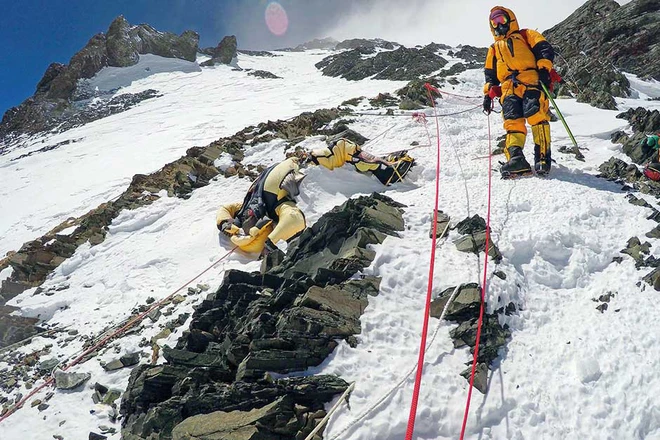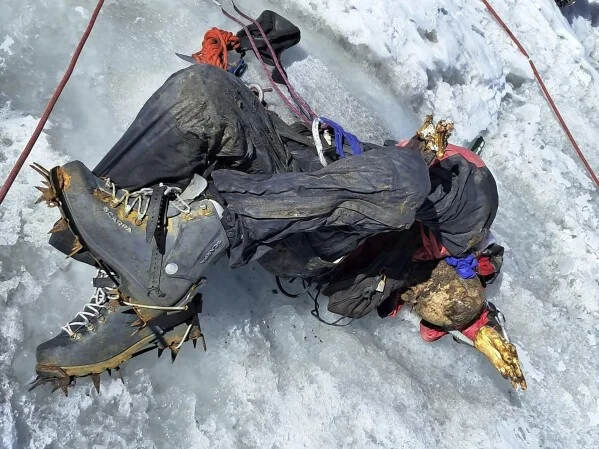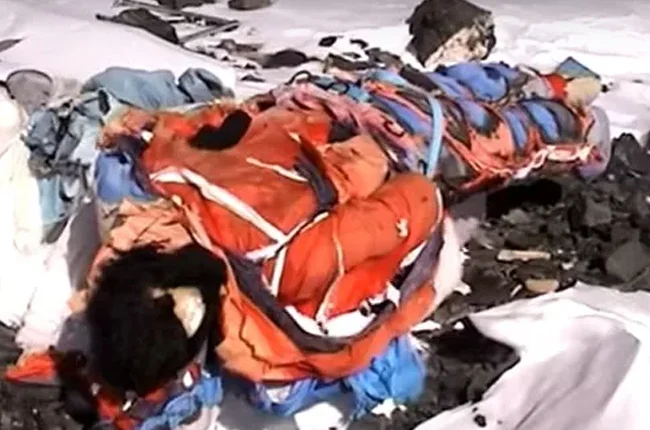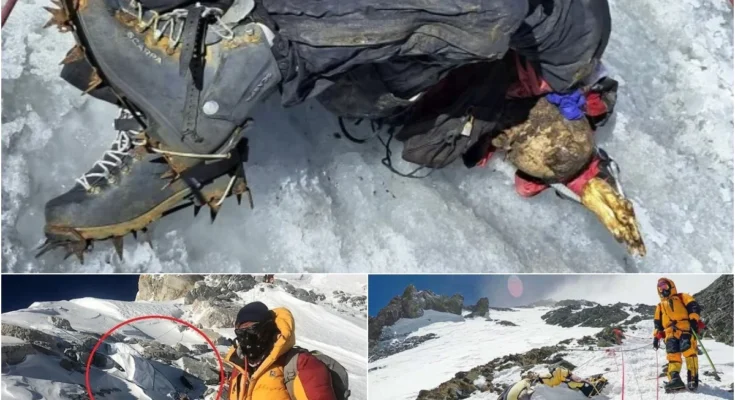Climate change is wreaking havoc across the planet, and even the most remote and majestic places are not immune. The Himalayas and Mount Everest, a symbol of challenge and glory, are facing a chilling truth as their eternal ice melts. Once the final resting place for hundreds of climbers, Everest is now slowly revealing the bone-chilling secrets hidden beneath its icy surface.
1. The “Graveyard” on the Roof of the World
Since 1922, approximately 300 people have died in their quest to conquer Mount Everest, and at least 200 of those bodies remain on the mountain. For decades, these bodies were buried under thick layers of ice and snow, becoming a permanent part of the landscape.

However, things are changing. According to Ang Tshering Sherpa, former president of the Nepal Mountaineering Association, the rapid ice melt due to global warming is causing these bodies to surface. “Victims who unfortunately died climbing in recent years have been brought down. But bodies from a very long time ago are still there.” This grim reality has become more apparent since 2017, with more bodies being exposed. An officer working on the mountain stated, “I have personally helped retrieve 10 bodies in various places on Everest in recent years, and it’s clear that more are appearing.”
2. The High Cost and Ethical Dilemmas
Bringing a body down from the mountain is an incredibly difficult, expensive, and risky task. The estimated cost for a single retrieval can be as high as $70,000, requiring a team of experts and specialized equipment in extremely harsh conditions.

However, the cost isn’t the only issue. Some argue that removing the remains could be against the wishes of the deceased, who may have wanted their final resting place to be on this magnificent mountain. But with the prospect of around 200 bodies being exposed in the future, Nepalese authorities may have no choice but to remove them to prevent Everest from becoming an open-air “graveyard.”
3. The Macabre “Landmarks” and Alarming Predictions
In a gruesome twist, some of the exposed bodies actually serve as grim landmarks, helping current climbers navigate the treacherous routes and reminding them of the dangers that constantly lurk. It’s a chilling detail that highlights the brutal reality of the sport.

The impact of climate change on Everest is far-reaching. A 2015 study indicated that the mountain could lose 70-90% of its glacial ice by the end of the 21st century if the current melting rate continues. A 2018 study on the Khumbu glacier also found that the ice temperature was warmer than the average air temperature in the region, an alarming sign of the mountain’s warming.
The story of the bodies being revealed on Mount Everest is a heartbreaking reminder of the profound impact of climate change. It’s not just an environmental issue; it’s a story of dreams, adventure, and sacrifice. Climate change is physically altering Everest, but it’s also changing its meaning. The mountain, once a symbol of glory, is now becoming a stark warning of what we are losing.



